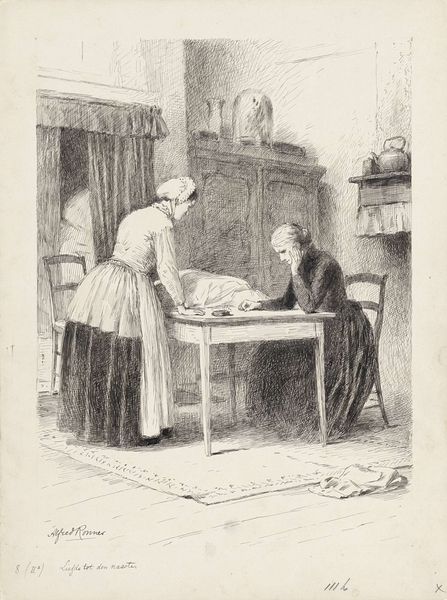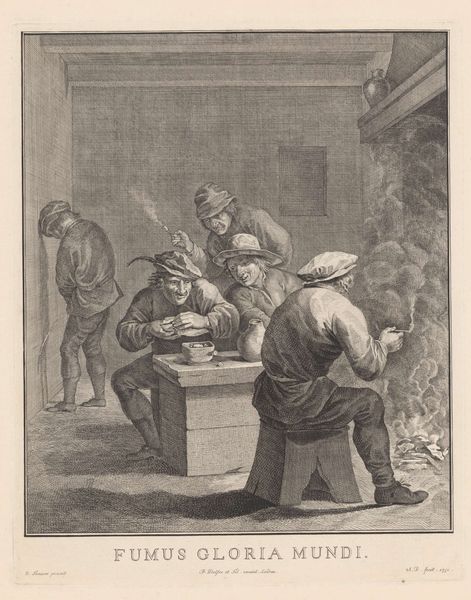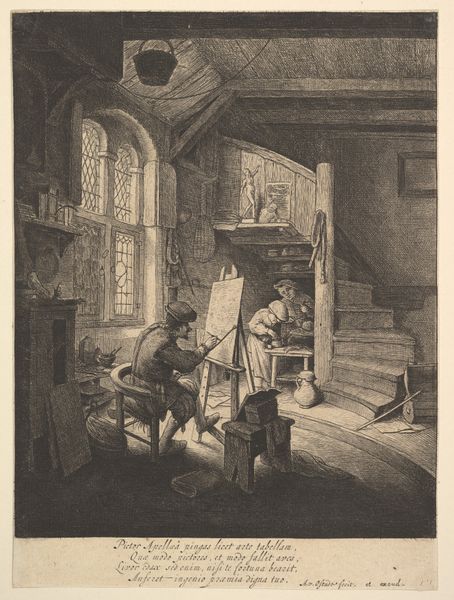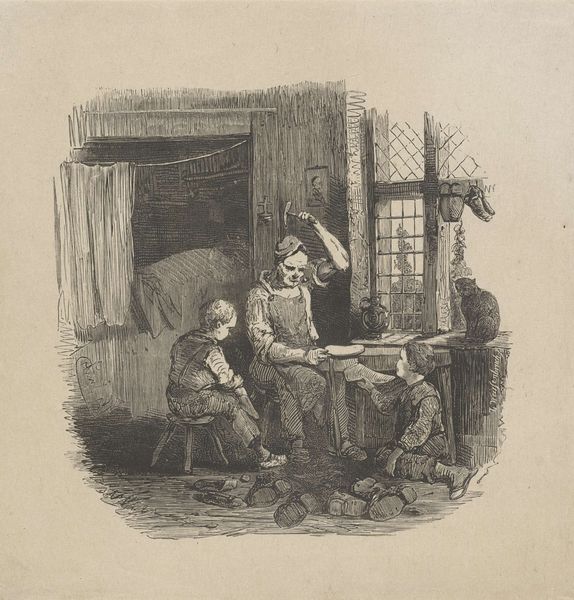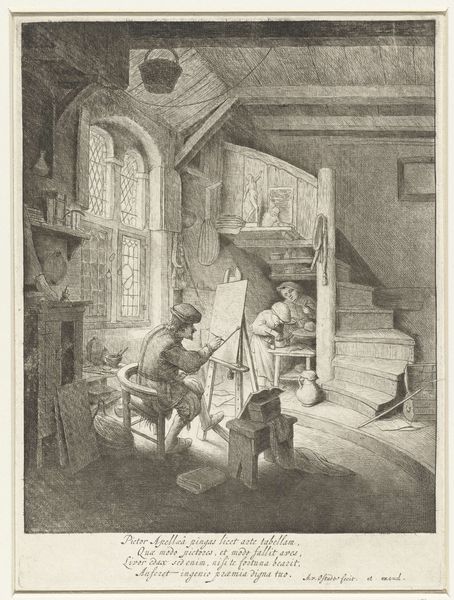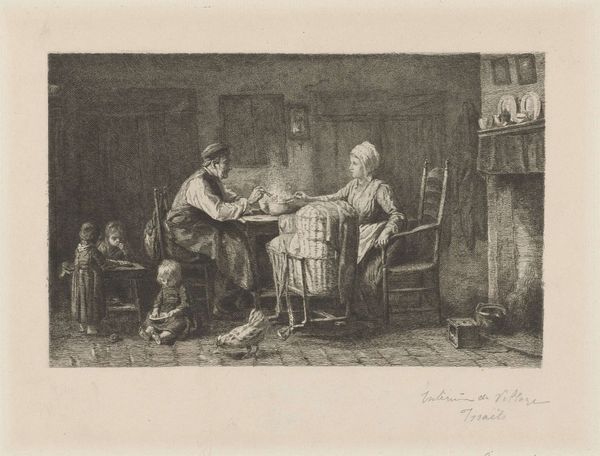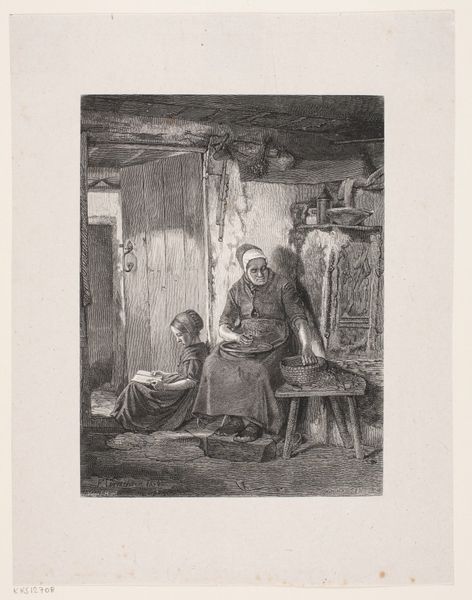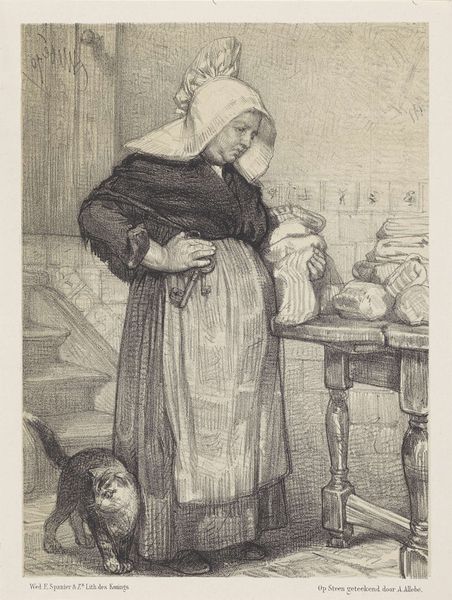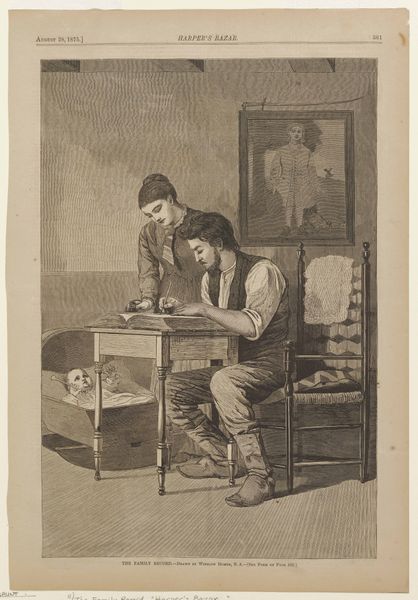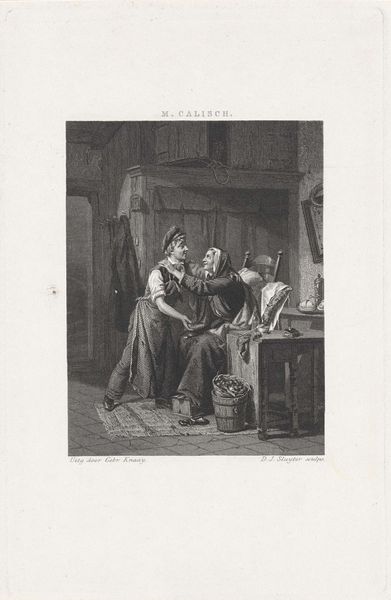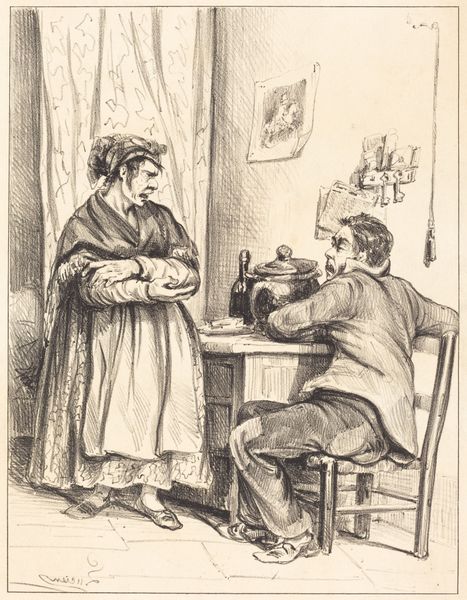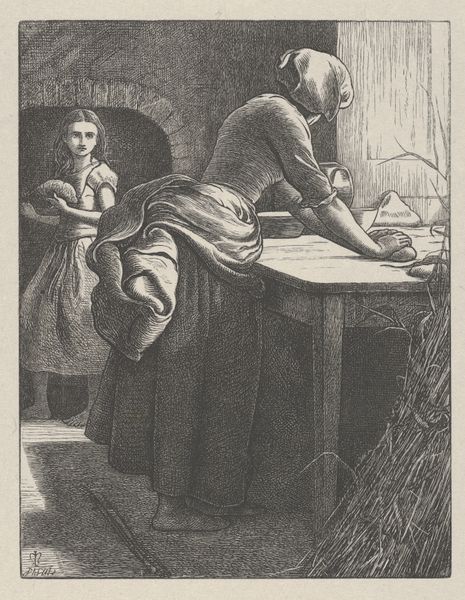
drawing, paper, pencil, graphite, pen
#
pencil drawn
#
drawing
#
amateur sketch
#
light pencil work
#
quirky sketch
#
narrative-art
#
pencil sketch
#
old engraving style
#
sketch book
#
paper
#
personal sketchbook
#
pencil
#
graphite
#
sketchbook drawing
#
pen
#
pencil work
#
genre-painting
#
academic-art
Dimensions: height 320 mm, width 240 mm
Copyright: Rijks Museum: Open Domain
Editor: So, this is "Slecht Voorbeeld," which translates to "Bad Example," by Alfred Ronner, created around 1893. It's a drawing using graphite, pen, and pencil on paper. The scene is so domestic, yet filled with tension. What’s your take on this piece? Curator: This drawing speaks volumes about the socio-political dynamics within the family unit in the late 19th century. What do you notice about the positioning of the figures? Editor: Well, the child is centrally located, literally being bent over a chair. The parents are looming over him, the composition focusing on their dominance. Curator: Precisely! Consider the role of discipline in that era. Public shaming and corporal punishment were accepted norms, often seen as necessary for social order. How does this drawing contribute to, or perhaps critique, those ideas? It is a work in dialogue with society, isn’t it? Editor: It makes me uncomfortable. While the title is "Bad Example," it’s hard to tell whose behavior is being critiqued. The child, presumably, but is Ronner also commenting on the parents' public display of punishment? Curator: Absolutely. By showcasing this intimate moment, Ronner forces the viewer to confront the ethics of such disciplinary actions and question the power structures inherent in the family. Think about how representations of childhood changed throughout the 19th century, shifting between innocence and inherent sinfulness. Editor: So, this drawing participates in that broader debate, shaping public opinion on child-rearing practices. I hadn't considered that angle. Curator: And notice the placement of the objects in the room – the covered furniture, the stepstool… These seemingly mundane details construct a narrative about social class and domestic life, making it a valuable artifact in the history of childhood. Editor: I will never look at simple drawings of family discipline the same way. It is as though Ronner is showing us more than what he tells! Thanks.
Comments
No comments
Be the first to comment and join the conversation on the ultimate creative platform.
